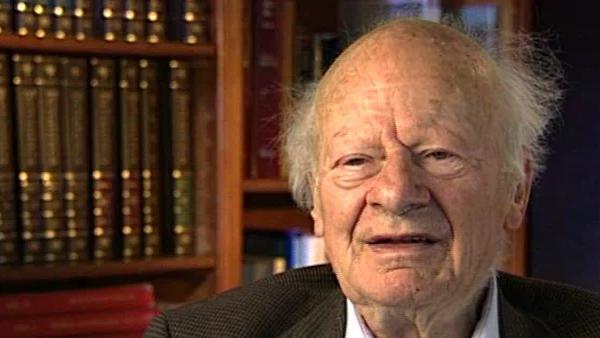NEXT STORY

Going to Cambridge on a travel fellowship
RELATED STORIES

NEXT STORY

Going to Cambridge on a travel fellowship
RELATED STORIES


|
Views | Duration | |
|---|---|---|---|
| 21. 'Bethe is my student. I want him back.' | 968 | 03:38 | |
| 22. Atomic form factor in my Habilitationsschrift | 638 | 02:57 | |
| 23. The usefulness of my Habilitationschrift to physics | 601 | 03:00 | |
| 24. Energy loss: bridging classical and quantum formula | 623 | 01:21 | |
| 25. Writing a paper with Enrico Fermi | 1611 | 03:51 | |
| 26. Going to Cambridge on a travel fellowship | 616 | 04:19 | |
| 27. Friendship with Nevill Mott at Cambridge | 632 | 02:38 | |
| 28. Visiting Rome and meeting Enrico Fermi | 1181 | 02:25 | |
| 29. People in Rome and Enrico Fermi's problem solving methods | 1101 | 03:28 | |
| 30. Working on level splitting in atoms with the Fermi atom | 535 | 02:10 |


[Q] The period, as you have remarked, after 1926 when you come into physics is amazingly rich and it changes the entire character of physics. The other papers which come out at that stage is of course Dirac and the electron, [and] the generalization of quantum mechanics to relativistic systems. You again fully studied those developments.
I read those papers and tried to digest them. I used them only later, but I did use them later. For one thing I generalized my stopping power to the relativistic case where I really didn't need the whole apparatus of Dirac but could use simple apparatus which had been developed by Christian Muller at Copenhagen and so I could generalize my stopping power for two electrons of relativistic energy.
[Q] And, Dirac is also the author of a famous paper on quantum electrodynamics, papers which you again study at that time, the generalization, the quantum theory of the electromagnetic field.
I did study it. One of the uses I made of it came when in 1931 I went to Fermi in Rome who had been very much interested in this. In fact he had written the only readable paper on quantum electrodynamics up to that time in the Reviews of Modern Physics, and Fermi was terribly interested in the various formulations of interaction of electric particles in Relativity Theory, so we wrote a joint paper on these various methods. I knew Muller's work quite well and Breit's work and Fermi knew everything else and this went very nicely. We discussed it couple of times and then Fermi said 'Well now let's write a paper about it.' So we did, and this was done in the most expeditious way possible; Fermi sat at the typewriter and typed the paper - he knew German very well and we conversed in German - and so he would say a sentence and I would nod my head and approve it and I would write down the formulae in the meantime - it was too difficult to type those - and in maybe a couple of hours this paper was done and sent in, then accepted and published in the Zeitschrift für Physik.
The late German-American physicist Hans Bethe once described himself as the H-bomb's midwife. He left Nazi Germany in 1933, after which he helped develop the first atomic bomb, won the Nobel Prize in Physics in 1967 for his contribution to the theory of nuclear reactions, advocated tighter controls over nuclear weapons and campaigned vigorously for the peaceful use of nuclear energy.
Title: Writing a paper with Enrico Fermi
Listeners: Sam Schweber
Silvan Sam Schweber is the Koret Professor of the History of Ideas and Professor of Physics at Brandeis University, and a Faculty Associate in the Department of the History of Science at Harvard University. He is the author of a history of the development of quantum electro mechanics, "QED and the men who made it", and has recently completed a biography of Hans Bethe and the history of nuclear weapons development, "In the Shadow of the Bomb: Oppenheimer, Bethe, and the Moral Responsibility of the Scientist" (Princeton University Press, 2000).
Tags: Rome, Reviews of Modern Physics, Zeitschrift für Physik, Enrico Fermi, Paul Dirac, Christian Muller, Gregory Breit
Duration: 3 minutes, 51 seconds
Date story recorded: December 1996
Date story went live: 24 January 2008